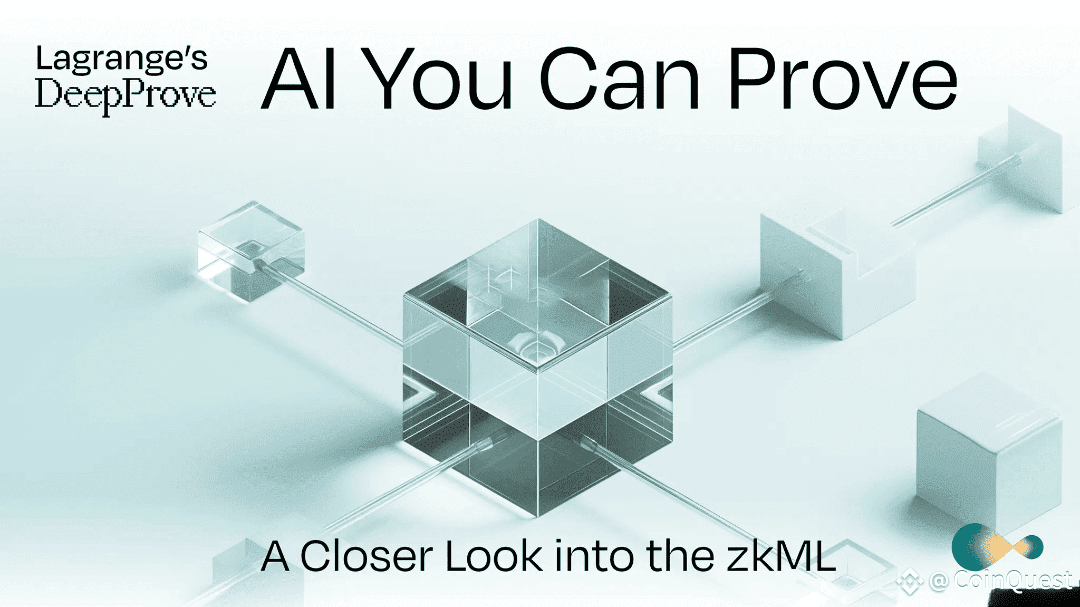As blockchain expands beyond traditional financial use cases into areas like AI, DeFi, and decentralized data infrastructure, the demand for secure, scalable, and verifiable computation is surging. That’s where Lagrange enters the scene $a next-generation ZK (Zero-Knowledge) infrastructure protocol built to handle complex, real-world computational needs with cross-chain compatibility and cryptographic certainty.
Let’s break down what makes Lagrange a standout in the evolving zero-knowledge and modular blockchain space.
🔍 What Is Lagrange?
Lagrange is a decentralized, trust-minimized ZK network delivering scalable proof generation and validation across multiple blockchains. At its core, Lagrange enables:
Decentralized ZK prover architecture
Cross-chain verifiability
zkML (zero-knowledge machine learning) via its DeepProve engine
Seamless integration with EigenLayer and Ethereum
Staking-enabled incentive design using the $LA token
It empowers developers to run computations off-chain while ensuring on-chain validation combining off-chain flexibility with cryptographic guarantees.
🧠 DeepProve Making AI Transparent & Trustworthy
DeepProve, Lagrange’s zkML solution, validates machine learning outcomes with verifiable proofs. This means:
AI predictions and models can be checked on-chain.
Already produced 11 million+ ZK proofs and 3 million+ AI inferences.
Enables real-time validation and scalability for AI systems in DeFi, gaming, and beyond.
In contrast to other zkML attempts still in the research stage, DeepProve is battle-tested and live.
🕸️ Modular Architecture & Multi-Chain Compatibility
Unlike platforms narrowly focused on scaling specific chains or Layer 2 ecosystems, Lagrange was built to interoperate across both EVM and non-EVM chains. This design supports:
Secure cross-chain computation
Integration with rollups, oracles, and DeFi protocols
Flexibility to operate across app-specific or general-purpose chains
It’s a universal ZK layer not tied to a single stack.
💰 The $LA Token Incentivizing Decentralized Computation
Lagrange’s native asset, $LA, powers its prover network and introduces a dynamic, crypto-native economic model:
Node operators bid to perform ZK proofs and earn rewards.
Ensures decentralization and competitiveness.
Creates a sustainable feedback loop of demand and value for computation.
Unlike governance-only tokens, $LA is integral to protocol operation and utility.
🔧 Real-World Use Cases Already in Motion
Lagrange is actively contributing to core Web3 advancements, including:
On-chain verification of AI model outputs
Rollup efficiency improvements via cost-optimized ZK generation
Oracle data proofing for off-chain inputs
Programmable ZK coprocessors for smart contracts and dApps
These features make Lagrange practical, powerful, and ahead of the curve.
🌐 Why Lagrange Matters
In an increasingly complex digital landscape, trustless computation is key. Lagrange delivers a framework where results can be validated not just assumed in real time and across networks. This trust layer is critical as Web3 evolves to support:
AI integration
Scalable DeFi
Cross-chain workflows
Real-world data validation
Lagrange is not just building a rollup it’s creating the computational trust engine for the decentralized internet.
📌 Final Thoughts
While many projects are building fast highways for Web3 (rollups, bridges, scaling layers), Lagrange is building the engine that makes the entire system verifiable and reliable.
By integrating advanced zkML, token-based incentives, and institutional-grade infrastructure, Lagrange positions itself at the forefront of modular, cross-domain computation.
In a world dominated by AI, decentralized finance, and trustless infrastructure, Lagrange gives developers, users, and protocols the cryptographic backbone to mov
e forward with confidence.
#BTCUnbound #lagrang #lagrange #creatorpad @Lagrange Official



